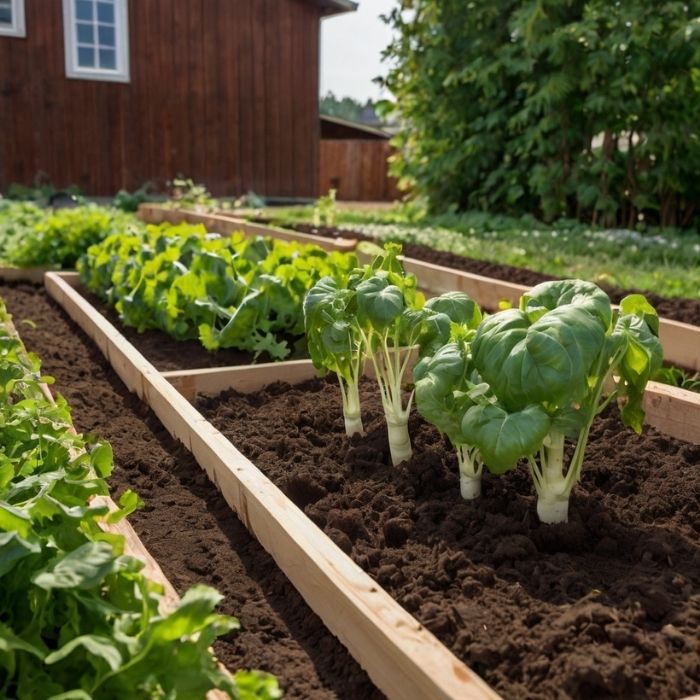When to Plant Vegetables: A Seasonal Guide to Maximizing Your Garden’s Potential
Gardening is a rewarding endeavor, but timing is everything when it comes to planting vegetables. Whether you’re a seasoned gardener or a beginner, knowing when to plant your vegetables can make the difference between a bountiful harvest and a disappointing yield. In this guide, we’ll break down the best times to plant vegetables based on seasons, climate zones, and specific plant needs. Let’s dig in!
Understanding Your Growing Zone
Before you start planting, it’s essential to know your USDA Hardiness Zone. This system divides North America into 13 zones based on average annual minimum winter temperatures. Your zone will help you determine the ideal planting times for your area.
- Zone 1-3: Short growing season; focus on cold-hardy vegetables.
- Zone 4-6: Moderate growing season; ideal for a wide variety of vegetables.
- Zone 7-10: Long growing season; perfect for heat-loving crops.
- Zone 11-13: Tropical climates; year-round gardening with warm-weather crops.
You can easily find your zone by entering your zip code into the USDA Plant Hardiness Zone Map.
Spring Planting: Cool-Season Vegetables
Spring is the perfect time to plant cool-season vegetables that thrive in milder temperatures. These crops can tolerate light frosts and grow best when daytime temperatures range between 55°F and 75°F.
Best Vegetables to Plant in Spring:
- Leafy Greens: Spinach, kale, lettuce, and arugula.
- Root Vegetables: Carrots, radishes, beets, and turnips.
- Cruciferous Vegetables: Broccoli, cauliflower, and cabbage.
- Peas: Snow peas, snap peas, and shelling peas.
When to Plant:
- Early Spring (4-6 weeks before the last frost): Start seeds indoors or directly sow hardy crops like spinach and peas.
- Mid-Spring (2-3 weeks before the last frost): Transplant seedlings of broccoli, cauliflower, and cabbage.
- Late Spring (after the last frost): Plant semi-hardy crops like lettuce and carrots.
Pro Tip: Use row covers or cloches to protect young plants from unexpected late frosts.
Summer Planting: Warm-Season Vegetables
Summer is the season for heat-loving vegetables that need plenty of sunlight and warm soil to thrive. These crops are sensitive to frost and should only be planted after the danger of frost has passed.
Best Vegetables to Plant in Summer:
- Nightshades: Tomatoes, peppers, and eggplants.
- Cucurbits: Cucumbers, zucchini, squash, and melons.
- Beans: Bush beans, pole beans, and lima beans.
- Corn: Sweet corn and popcorn varieties.
When to Plant:
- Early Summer (1-2 weeks after the last frost): Transplant tomatoes, peppers, and eggplants.
- Mid-Summer: Direct sow beans, cucumbers, and squash.
- Late Summer: Plant a second round of fast-growing crops like beans and zucchini for a fall harvest.
Pro Tip: Mulch around plants to retain soil moisture and regulate soil temperature during hot summer months.
Fall Planting: Cool-Season Crops Round Two
Fall is an excellent time to plant cool-season vegetables again, as the cooler temperatures and shorter days create ideal growing conditions. Many crops planted in the fall taste sweeter because the cold weather converts starches into sugars.
Best Vegetables to Plant in Fall:
- Leafy Greens: Swiss chard, mustard greens, and collards.
- Root Vegetables: Radishes, carrots, and parsnips.
- Brassicas: Brussels sprouts, kale, and kohlrabi.
- Garlic and Onions: Plant cloves and sets for a summer harvest the following year.
When to Plant:
- Late Summer (8-10 weeks before the first frost): Start seeds for fall crops like broccoli and Brussels sprouts.
- Early Fall (6-8 weeks before the first frost): Direct sow spinach, radishes, and lettuce.
- Mid-Fall (4-6 weeks before the first frost): Plant garlic and onions for overwintering.
Pro Tip: Use cold frames or hoop houses to extend the growing season and protect plants from early frosts.
Winter Planting: Overwintering and Cold-Hardy Crops
In milder climates (Zones 7-10), winter gardening is possible with the right selection of cold-hardy vegetables. Overwintering involves planting crops in late fall that will grow slowly through the winter and be ready for harvest in early spring.
Best Vegetables to Plant in Winter:
- Leafy Greens: Winter lettuce, spinach, and mâche.
- Root Vegetables: Turnips, rutabagas, and winter radishes.
- Brassicas: Kale, cabbage, and Brussels sprouts.
When to Plant:
- Late Fall (before the ground freezes): Plant overwintering crops like garlic, onions, and certain varieties of kale.
- Winter (in mild climates): Direct sow cold-hardy greens and root vegetables.
Pro Tip: Use mulch to insulate the soil and protect roots from freezing temperatures.
General Tips for Successful Vegetable Planting
- Test Your Soil: Ensure your soil has the right pH and nutrient levels for the vegetables you’re planting. Most vegetables prefer a pH between 6.0 and 7.0.
- Rotate Crops: Avoid planting the same family of vegetables in the same spot year after year to prevent soil depletion and pest buildup.
- Companion Planting: Pair compatible plants together to deter pests and improve growth. For example, plant basil near tomatoes to repel aphids.
- Water Wisely: Water deeply and consistently, especially during dry spells. Early morning is the best time to water to reduce evaporation and prevent disease.
- Monitor for Pests: Regularly inspect your plants for signs of pests or disease and take action promptly.
Final Thoughts
Knowing when to plant vegetables is a skill that improves with experience and a little research. By understanding your growing zone, the needs of different crops, and the unique characteristics of each season, you can create a thriving garden that provides fresh, homegrown produce year-round.
Whether you’re planting crisp lettuce in the spring, juicy tomatoes in the summer, or hearty kale in the fall, timing your plantings correctly will ensure a successful and satisfying harvest. So grab your gardening tools, consult your local frost dates, and get ready to grow your best garden yet!

